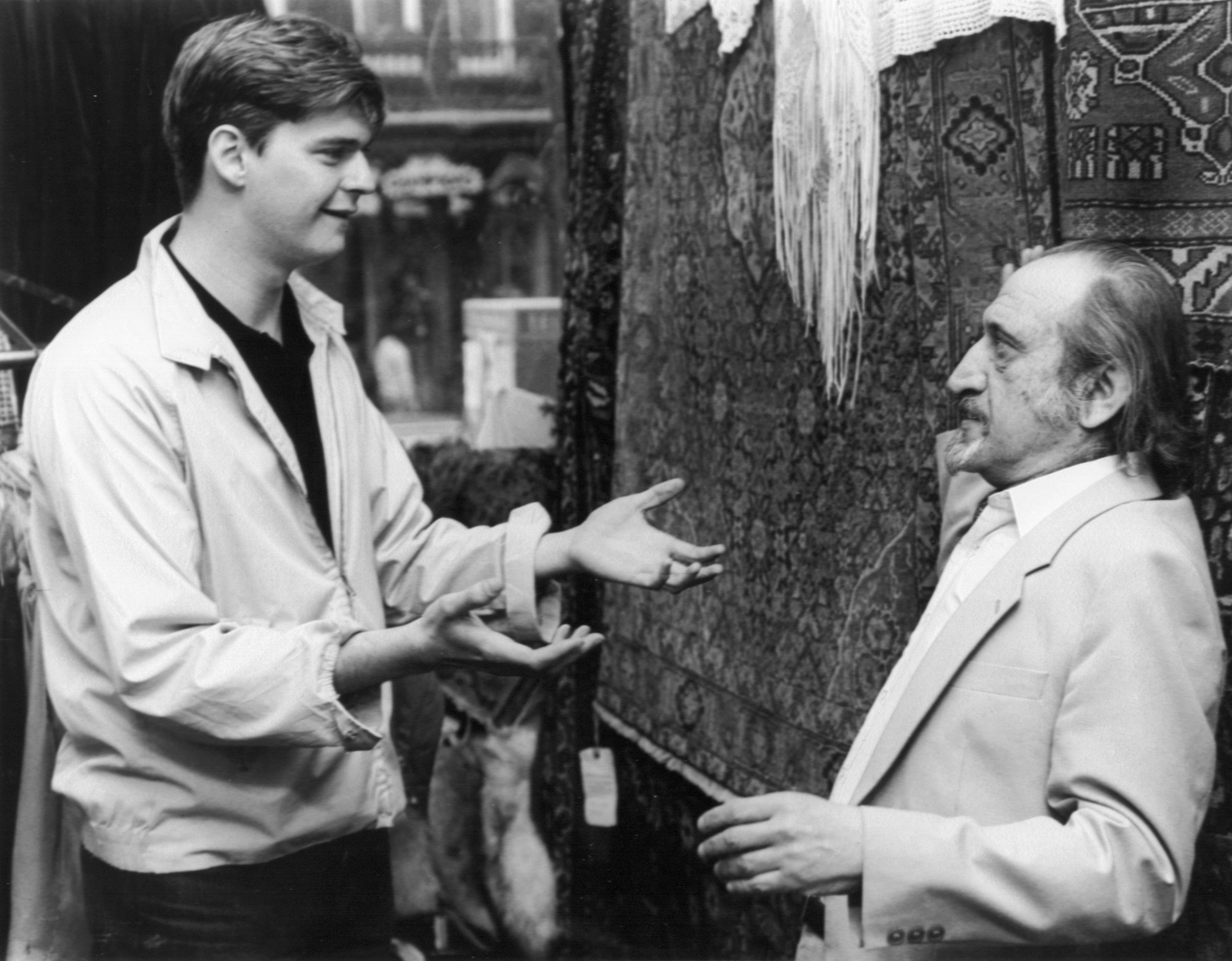Atom Egoyan’s films are frequently about performativity, though it can be easy to lose sight of this recurring motif (and device) as it manifests into thematically broader interrogations about other subjects like trauma, technology, and yes, immigration. While his films are rarely about the experiential tribulations of immigration, many of his characters—whether or not they are actual immigrants—engage in behaviours that deny them concrete identities. In choosing consciously to live in a liminal state, Egoyan’s characters are subject to a disorienting experience similar to the one that immigrants must face as they modify their geographical and cultural landscapes.
The idea of an identity crisis and its ramifications being a by-product of immigration is perhaps best exemplified in Egoyan’s first feature film Next of Kin. The film follows Peter, a 23-year-old white Canadian male frustrated by his parents relentlessly asking him what he will do with his life. Peter begins “acting” out other personas out of boredom, and, though he won’t admit it, his own inability to form his own identity. He then finds a videotaped therapy session of an Armenian family who gave up their son Bedross for adoption when they arrived penniless in Canada many years ago, a desperate move that the parents regret to this day. In the video, patriarch George Deryan takes out his anger and guilt on their daughter Azah, whom the couple reared once financially secure in the new country. Inspired by the genuine family problems of the Deryans, Peter informs his parents and therapist of a solution for their now-seemingly benign issues: he will go on a trip to find himself. In actuality, he attempts—all-too successfully—to enter the Deryan family posing as their long-lost son. Despite his obvious Caucasian appearance, the Deryans, including Azah, immediately accept and joyously embrace Peter as their real son. Though his actions are duplicitous, Peter believes he is helping the Deryans, in particular the strained relationship between father and daughter.
Through the Deryans, Egoyan explores the contradictory fluidity of identity that occurs as an immigrant is forced to consolidate two (or even multiple) sides of their identity once they arrive in a new country. By including a white Canadian character who is mistaken as Armenian, the film underscores the social construct of being an immigrant, and the unsettling degree to which immigrants are forced to play the role of misplaced persons learning to adapt in a new country with strange customs. Though he initially remains hesitant, Peter naturally embraces becoming a member of Armenian ethnicity and is reciprocally embraced as an authentic member of the culture, even though he looks and acts nothing like it.
Though Peter is the primary vessel through which the film explores the confusing process of identity creation, the immigrant experience is perhaps best depicted through the Deryan parents. George details the rise, fall and rise again of his family fortune as a store merchant, recounting being forced to flee his home country when his family’s safety was threatened and his entire wealth stolen. In Canada, he tells Peter, he had to start again as a dishwasher and taxi driver until he could afford to buy another store, his matter-of-fact relation of the American Dream romanticizing the immigrant experience. “I know this is a small store if I compare what I had back there,” he tells Peter. “But you think I’m miserable? No, I’m very happy. If you start with nothing, everything you earn fills you with pride.”
George is oblivious to his cognitive dissonance, both as a once-immigrant and a sonless father who sees his son when given the chance. Similarly, his wife Sonya treats her now-grown son as if he were still a baby, holding him like one at Peter’s bequest. Her willingness to live her life as if trapped in the past is a sign of regression, and a refusal to accept the conditions of her present. Nostalgia is surely a common emotion for immigrants who miss their homeland, and the clear Lacanian connection between mother and (fake) son in this scene adds another layer to Peter’s identity crisis: he is more than willing to regress to a point at which he had no ego, before he could recognize himself in the mirror, before he felt the pressure of becoming his own person.
Bedross then, is an irresistible synecdoche of the Deryans’ homeland. An immigrant need not openly express their grief for their homeland; an internal sense of loss is implicit in the experience of immigration itself, and for the Deryans, the loss of their son is a projection of that grief. It also make sense then, for George to project vitriol onto Azah, the poster child of the new land who actively rejects her family’s values and represents all the hardships the Deryans have endured in the attempt to recreate their lives in Canada.
Therapy in Next of Kin is at best a confusing and unrewarding exercise and at worst a means of goading patients into reliving their past trauma. In the Deryans’ session, the therapist pretends to be Bedross in an attempt to allow the family a chance for catharsis. Unfortunately, this method—which the therapist describes as “successful” to a colleague—only perpetuates the frustrating in-between non-state of someone suffering from grief (or, of being an immigrant). Forced to relive painful memories and simultaneously not allowed to live authentically in the present, it is any wonder the Deryans are unable to get over losing their home or son. Returning to the time and place where everything was normal is out of the question; they can exist only infinitely in a state of the therapist’s role play, in a constant repetitious state of performance—a bittersweet limbo they already inhabit every day.
Because Egoyan was only a toddler when his family moved from Egypt to Canada, his personal experiences of being a cognizant member of the Armenian diaspora occurred later in his young adulthood. He grew up as an outsider teased at school, aggressively denying his heritage until his adult years, when he rediscovered his Armenian roots through the student association at the University of Toronto. Many of Egoyan’s early films explore the act of assimilation and its well-known frustrations that seem to perpetually linger, no matter how persuasive one’s ability to co-adopt a new culture as their own. Calendar, with its Egoyan-tistical protagonist who loses his sense of self (and his wife) as he glibly photographs his homeland for a calendar, is Egoyan’s most compellingly articulate portrayal of assimilation and the loss of authentic culture.
But while Calendar’s protagonist is resolute in hiding his anxieties about his homeland, the actions and words ofNext of Kin’s characters spill out haphazardly, revealing the cracks within their psyche and discombobulated ipseity. The film compares the psychological complexities of immigration within the broader scope of identity crisis—specifically noting its similarities to a young man who hasn’t figured out who he is or what he wants from life, a man who can only seem to exist when pretending to be someone else. This delusion is matched by the Deryans’ own, with long-lost memories of the past and the familiar becoming trigger-projected into utopian delusions in the present. It’s a rather pessimistic view of assimilation and immigration, but the sentiment rings true, even for immigrants who have “successfully” landed. Next of Kin unravels the absolutist notion that being an immigrant is simply a legal status or a marker of identity; immigration is a performance. In theatre, the play lasts only a few weeks. With immigration, the play repeats every night, and character development exercises are confounding instead of insightful.

